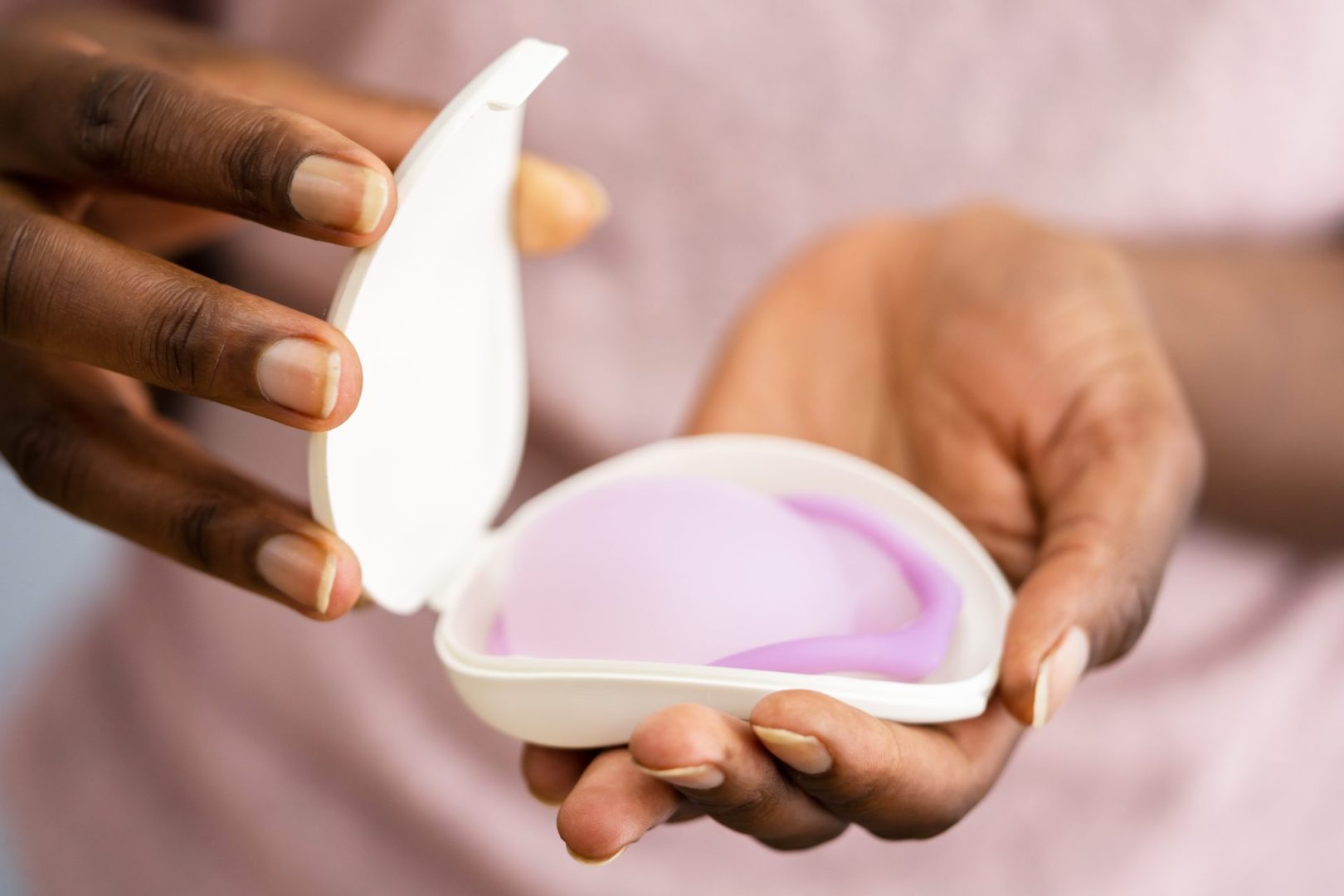The vaginal contraceptive ring represents one of the more recent innovations in hormonal birth control, offering a unique delivery system that combines convenience with effectiveness. Unlike daily pills or quarterly injections, this flexible polymer ring releases hormones directly within the vaginal environment, creating both advantages and considerations that differ from other contraceptive methods. This thorough examination explores how the vaginal ring works, its real-world effectiveness, potential side effects, and important factors to consider when evaluating this birth control option.
The hormonal mechanism explained
The vaginal contraceptive ring functions through a controlled release of synthetic hormones similar to those found in many birth control pills. The flexible, transparent ring measures approximately 2 inches (54mm) in diameter and contains a combination of etonogestrel (a progestin) and ethinyl estradiol (an estrogen). These hormones slowly diffuse through the ring material into the vaginal tissue.
Once absorbed through the vaginal walls, these hormones enter the bloodstream and prevent pregnancy through three concurrent mechanisms. Primary among these is the suppression of ovulation—the monthly release of an egg from the ovaries. By maintaining steady hormone levels, the ring disrupts the normal hormonal surge that triggers egg release, effectively blocking the availability of an egg for fertilization.
The secondary mechanism involves cervical mucus alteration. The progestin component thickens the mucus secreted by the cervix, creating a less hospitable environment for sperm. This thickened mucus forms a physical barrier that significantly impedes sperm movement into the upper reproductive tract, reducing the likelihood of sperm reaching an egg even if ovulation were to occur.
The tertiary protective mechanism involves changes to the endometrium—the lining of the uterus. The hormonal influence thins this lining and alters its receptivity, making it less favorable for implantation in the rare event that fertilization does occur. This provides an additional layer of pregnancy prevention beyond the primary mechanisms.
Unlike birth control pills that create daily hormone fluctuations, the ring maintains relatively steady hormone levels throughout the wearing period. This stability often translates to fewer side effects related to hormone fluctuations while maintaining a contraceptive effect comparable to properly used oral contraceptives.
Real-world effectiveness rates
The effectiveness of any birth control method falls into two distinct categories: perfect use effectiveness (when used exactly as directed) and typical use effectiveness (accounting for human error and inconsistency). For the vaginal ring, this distinction reveals important considerations.
Under perfect use conditions, the vaginal ring demonstrates an impressive 99.7% effectiveness rate, meaning that fewer than 1 in 300 women will experience an unintended pregnancy during their first year of perfect ring use. This near-perfect effectiveness reflects the ring’s ability to maintain consistent hormone delivery when used strictly according to guidelines.
Typical use effectiveness, which better reflects real-world conditions, shows a 93% effectiveness rate. This means approximately 7 out of 100 women using the ring will experience an unintended pregnancy during their first year of use. This decrease from perfect use rates primarily stems from issues with consistent timing—late ring replacements, extended removal periods, or improper insertion techniques.
Effectiveness can be influenced by several factors beyond user behavior. Body weight exceeding 198 pounds (90 kg) may reduce hormonal effectiveness, though research shows smaller reductions in efficacy compared to some other hormonal methods. Certain medications, particularly some antibiotics, antifungals, anticonvulsants, and HIV medications, can reduce the ring’s effectiveness by accelerating hormone breakdown in the body.
Vomiting and diarrhea, unlike with oral contraceptives, do not affect the ring’s effectiveness since the hormones bypass the digestive system altogether. This represents a significant advantage for women who experience digestive issues or conditions that might compromise pill absorption.
For maximum effectiveness, the standard usage pattern involves inserting the ring, leaving it in place for three consecutive weeks (21 days), then removing it for one week to allow for withdrawal bleeding similar to a menstrual period. The exact placement within the vagina is not critical for effectiveness, as the hormones will be absorbed regardless of precise position.
Common side effects and body responses
Like all hormonal contraceptives, the vaginal ring produces various side effects that range from beneficial to concerning, with significant variation among individual users. Understanding these potential effects helps women make informed decisions about this contraceptive option.
The most commonly reported side effects during the first 1-3 months include light spotting between periods (breakthrough bleeding), breast tenderness, mild headaches, and mild nausea. These initial side effects typically diminish after the adjustment period as the body acclimates to the hormone levels provided by the ring.
Vaginal-specific effects sometimes occur due to the ring’s placement. Some users report increased vaginal discharge, occasional irritation, or discomfort from ring awareness during certain activities or positions. Approximately 5% of users experience vaginal discomfort initially, though this typically resolves as they become accustomed to the ring’s presence.
Some women experience beneficial side effects similar to those of other combined hormonal contraceptives. These often include reduced menstrual cramping, lighter and more predictable periods, and decreased symptoms of premenstrual syndrome. The steady hormone release can create more stable mood patterns throughout the cycle for some users compared to methods with more hormonal fluctuation.
Weight changes show minimal association with the vaginal ring compared to some other hormonal methods. Clinical studies demonstrate an average weight change of less than 1 pound during the first year of use, with some users experiencing slight gains and others slight losses. This neutral weight profile makes the ring an attractive option for those concerned about weight-related side effects.
Sexual side effects vary considerably among users. While many report no changes to libido or sexual function, some experience decreased desire or vaginal dryness. Conversely, some users report enhanced sexual satisfaction due to reduced concern about pregnancy and decreased menstrual symptoms. Approximately 14% of male partners report feeling the ring during intercourse, though most do not find this problematic.
Serious health considerations
While rare, certain serious health risks associated with the hormonal components of the vaginal ring require careful consideration, particularly for women with specific risk factors. Understanding these potential complications allows for informed risk assessment.
The estrogen component slightly increases the risk of blood clots, particularly in the legs (deep vein thrombosis) or lungs (pulmonary embolism). This risk remains lower than the blood clot risk during pregnancy but occurs at approximately 3-5 times the rate of non-hormonal contraceptive users. Women with personal or strong family histories of blood clots, certain clotting disorders, or specific heart conditions should avoid estrogen-containing contraceptives including the ring.
Women over 35 who smoke face substantially increased cardiovascular risks when using any estrogen-containing method, including the vaginal ring. The combination of smoking, age, and estrogen creates synergistic effects on blood clot and stroke risk, making non-estrogen or non-hormonal methods safer choices for this demographic.
Migraine with aura (visual disturbances preceding headache) represents another condition where ring use may increase stroke risk. Women who experience these specific types of migraines typically receive recommendations for progestin-only or non-hormonal methods rather than combined hormonal contraceptives like the ring.
Elevated blood pressure occurs in approximately 2-5% of ring users, similar to rates seen with other combined hormonal methods. Regular blood pressure monitoring during the first few months of use helps identify this potential side effect early, allowing for method reconsideration if significant increases occur.
The relationship between hormonal contraceptives and cancer risk shows complex patterns. The ring, like other combined hormonal methods, appears to reduce the risk of ovarian and endometrial cancers while potentially causing a slight, temporary increase in breast cancer risk that returns to baseline after discontinuation. The current research suggests no long-term increase in cancer risk associated with vaginal ring use.
Practical usage considerations
Beyond effectiveness and side effects, practical aspects of ring use significantly influence satisfaction with this contraceptive method. Understanding the daily experience of ring use helps set realistic expectations about this birth control option.
The standard usage schedule involves a three-weeks-in, one-week-out pattern, though continuous use (skipping the ring-free week) proves safe and increasingly popular for those wishing to avoid withdrawal bleeding altogether. This flexibility allows women to manipulate their cycles for convenience around events, travel, or personal preference.
The insertion and removal process requires basic comfort with body self-manipulation but no special medical skills. The ring compresses easily for insertion and positions itself naturally within the vaginal canal. Most users report a quick learning curve with placement and removal becoming routine after the first few cycles.
Temperature requirements necessitate attention during storage. Unused rings should be refrigerated until use approaches, then can remain at room temperature for up to four months. Exposure to high temperatures can compromise effectiveness through accelerated hormone degradation, requiring awareness during hot weather or travel to warm climates.
Sexual considerations include the option to remove the ring for up to three hours during intercourse if desired, though removal is not medically necessary. The flexible material generally remains comfortable for both partners, with approximately 85% of users reporting no interference with sexual activity.
Cost and accessibility vary considerably depending on insurance coverage and location. In the United States, a prescription is required, with monthly costs ranging from fully covered under many insurance plans to approximately $150-$200 per month without coverage. Many family planning clinics offer reduced-cost options based on income.
Transition and fertility return
The transition both onto and off the vaginal ring involves important physiological considerations that affect contraceptive planning. Understanding these transition periods helps establish realistic expectations about protection timing and fertility return.
When initiating ring use, backup contraception proves necessary for the first seven days as ovarian suppression becomes established. Starting the first ring on the first day of menstruation provides immediate protection without backup needs, though this timing isn’t required for effectiveness after the initial protection period.
Missed or delayed ring replacements create vulnerability windows proportional to the extension beyond the standard 21-day wearing period. Removals exceeding three hours (when not during the scheduled ring-free week) may compromise effectiveness, particularly if they occur during the first or third week of the wearing cycle.
After discontinuation, fertility typically returns rapidly, with most women resuming ovulation within 1-3 cycles. Approximately 83% of women who discontinue the ring to pursue pregnancy conceive within 12 months, a rate comparable to the general population and faster than the return observed with some other hormonal methods, particularly injectables.
Post-ring cycle patterns vary among individuals, with some experiencing immediate return to previous menstrual patterns while others notice temporary irregularity as their natural hormonal fluctuations reestablish. This transition period rarely indicates any long-term effects on fertility or reproductive health.
For women transitioning between contraceptive methods, the optimal strategy often involves overlapping protection—starting the new method before discontinuing the ring to ensure continuous pregnancy prevention during the transition period. This approach proves particularly important when switching to methods that require establishment periods, like hormonal implants or IUDs.
User satisfaction profiles
User satisfaction with the vaginal ring demonstrates distinct patterns that help predict which women might find this method most suitable for their preferences and lifestyle. Understanding these satisfaction trends aids in making informed contraceptive choices.
The highest satisfaction rates appear among women who value monthly rather than daily contraceptive management but prefer their own control over provider-administered methods. The monthly schedule eliminates daily adherence concerns while maintaining user autonomy compared to longer-acting methods administered by healthcare providers.
Privacy considerations positively influence satisfaction for many users. The ring remains completely private during use, with no visible external components or detectable signs during social or work activities. This discretion proves particularly valuable for women whose cultural, family, or social circumstances make contraceptive privacy important.
Compared to other hormonal methods, continuation rates for the vaginal ring at one year average approximately 67%, slightly higher than oral contraceptives (58%) but lower than long-acting methods like IUDs (80%). The most commonly cited reasons for discontinuation include partner objections, ring-specific side effects like increased discharge, and issues with remembering the monthly schedule.
Body comfort and awareness issues significantly impact satisfaction. Women comfortable with body self-contact generally report higher satisfaction, while those with significant discomfort around genital self-touching often prefer alternative methods. This body comfort factor often predicts satisfaction better than many demographic variables.
Education level shows surprisingly little correlation with correct usage, suggesting that the straightforward nature of ring use makes it accessible across various health literacy levels. This accessibility contributes to the method’s suitability for diverse populations with varying backgrounds and educational experiences.
The vaginal contraceptive ring offers a distinctive profile among hormonal contraceptive options, balancing convenience, effectiveness, and user control in ways that suit many women’s preferences and lifestyles. While sharing many characteristics with other combined hormonal methods, its unique delivery system creates both advantages and considerations that distinguish it from alternatives.
For women seeking non-daily contraception with personal control over initiation and discontinuation, the ring provides an effective option worth consideration. As with all birth control methods, individual factors including medical history, lifestyle preferences, and specific priorities should guide the decision-making process, ideally in consultation with healthcare providers who can offer personalized recommendations based on individual circumstances.










